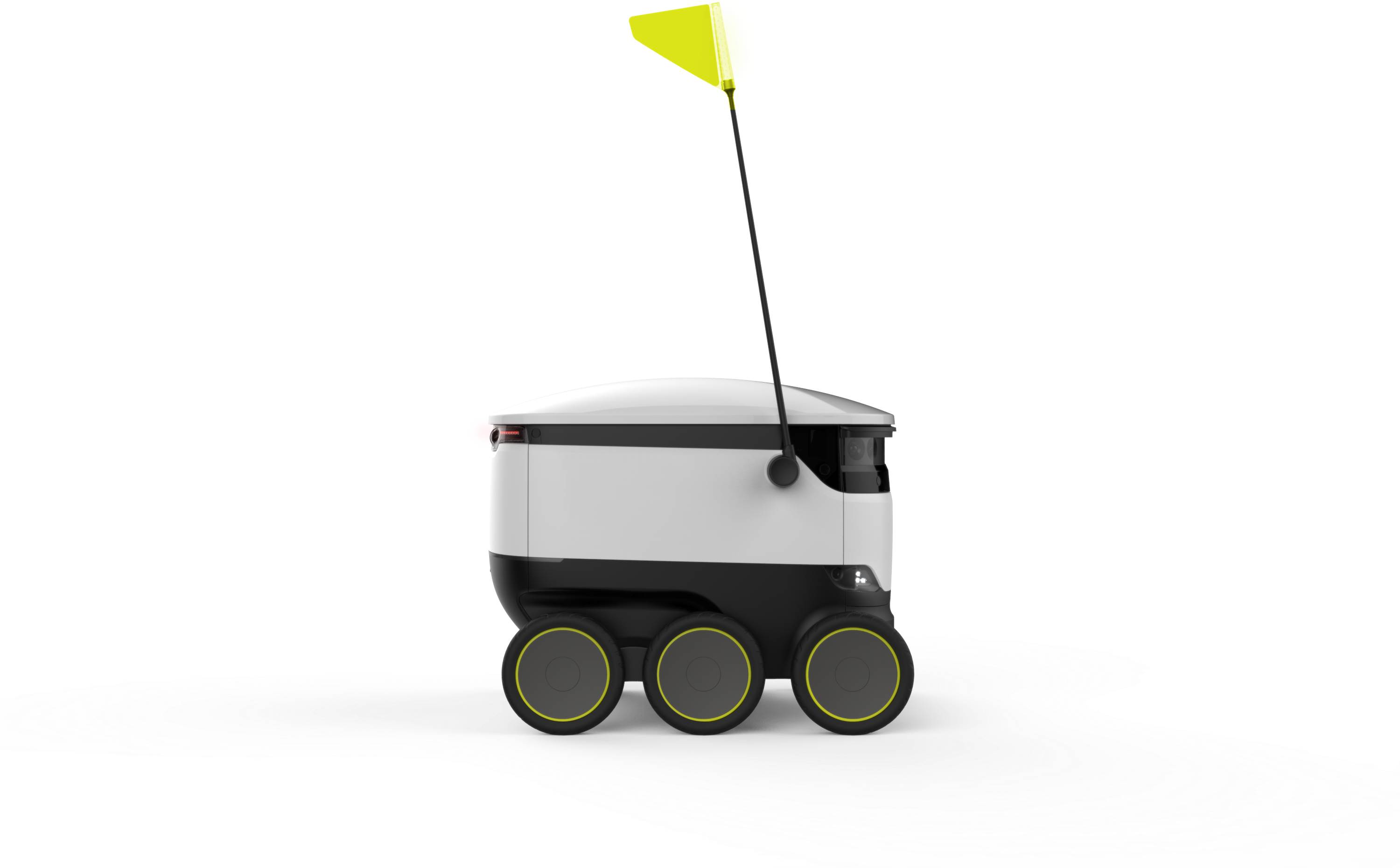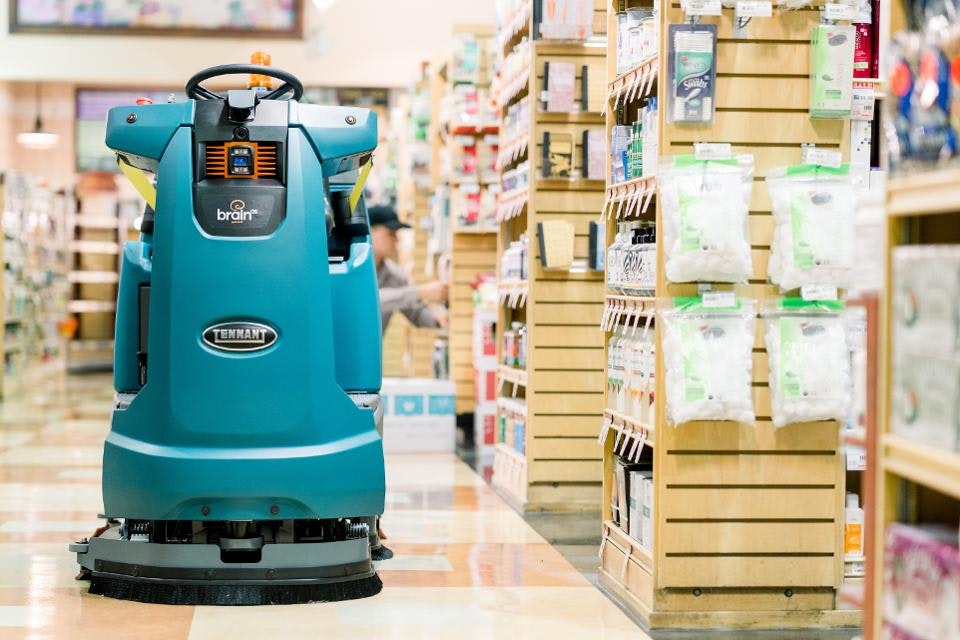Starship, the Estonian robot delivery company, has never been busier. Since the UK brought in social distancing measures that limited people’s ability to go shopping, the number of deliveries made by its fleet of autonomous robots has rocketed.
Our robots have gone from a convenience to a necessity for a lot of people, and that is a big mental shift.
“We are expanding into new neighbourhoods every week. Prior to the Covid-19 crisis, we’d expand into a new area monthly, but now we are constantly getting enquiries asking if we can deliver in new places,” says Henry Harris-Burland, vice president of marketing at Starship.
The company has some 70 robots serving the Milton Keynes area, delivering groceries and takeaway food to people’s homes, and is adding more bots as fast as it can source them. Starship's bots have been working in Milton Keynes already for the past two years, but the crisis has made more people seek out the service.
“This has definitely accelerated consciousness of the robots. They have gone from a convenience to a necessity for a lot of people, and that is a big mental shift,” says Harris-Burland.
In the US, where Starship was starting a big push to get its robots onto college campuses, there has been something of a pivot. The robots still serve college students but are increasingly making deliveries in regular neighbourhoods, too, from Tempe, Arizona to Fairfax, Virginia.
Other robot companies are seeing a similar upsurge as companies begin to plan for a post-pandemic world where people will have to maintain safe distances from each other while socialising, working, shopping and travelling.

Preparing for the low-touch economy
A whole new set of customers are making enquiries now, says Barney Wragg, chief executive and founder at Karakuri, the UK-based startup that makes food preparation robots.
Previously people asked how the robots could help the customer proposition, now the primary request is about hygiene and safety.
“In the first couple of weeks everyone was in panic mode, but we’ve now started to see if a growing realisation is that Covid-19 is something that won’t disappear for a long time and we will have to live with the follow-on impact,” he says.
“Previously people asked about how the robots could help the customer proposition, now the primary request is about hygiene and safety,” says Wragg. “Kitchens are traditionally densely-packed places but now won’t be able to have as many people per square foot.”
Before the pandemic, Karakuri was preparing for field trials of its DK-One robot in restaurants and central kitchens, but now it is getting enquiries from big catering companies and grocery businesses as well.
Karakuri’s robots could be installed to do some of the food preparation, allowing staff to be further apart from each other, or not moving around as much as usual.
All kinds of companies will be looking to decrease the number of human contacts involved in production and supply chains. Ocado, which develops automated warehouse technologies, points out that goods handled by their system are typically only touched by two pairs of human hands during the whole process. That could become an increasingly important selling point.
Self-driving cars, too, may benefit from a move to a low-contact economy. Swedish self-driving truck company Einride recently expanded a deal to provide transport for Lidl, the German supermarket chain. Initially, the partnership is about moving to more eco-friendly electric vehicles for Lidl’s logistics, but there is a plan to automate the driving, too.
“Automating and electrifying transport [AET] reduces direct human contact at several touchpoints in a supply chain, reducing risk for everyone involved,” says Robert Falck, founder and chief executive at Einride. “We know that AET is the way forward for a myriad of reasons, and this crisis has highlighted yet another."
The “new clean”
There is also a growing need for companies to prove cleanliness to customers.
A robot food service, where clean bowls go in on one side and filled bowls come out the other without being touched by humans, is great for traceability.
“The feedback is that consumers have become very interested in the traceability of their food — who has been in contact with it and when it was prepared,” says Karakuri’s Wragg.
“A robot food service, where clean bowls go in on one side and filled bowls come out the other without being touched by humans, is great for that.”
Denmark’s Blue Ocean Robotics has recently shipped hundreds of cleaning robots — which disinfect wards and corridors with UV light — to hospitals in China.
Another company heavily involved in new cleaning standards is Brain Corp, a US-based startup which provides software for cleaning robots used by companies like Walmart.
The company says it has seen a 13% increase in usage of its robots in the first quarter, even before the pandemic fully reached the US and Europe, and has seen a further upsurge in customer interest in recent weeks. It was one of the startups able to raise a $36m series D round last month, despite market turmoil.

Michel Spruijt, general manager for Europe for Brain Corp, says that a robot that can record very precisely what has been cleaned and when it was done suddenly has a new value in proving hygiene standards to customers.
In the past, it was enough to clean and tell someone you had done it but now is about showing data about the cleaning.
“The value of ‘clean’ means something different now,” he says. “In the past, it was enough to clean and tell someone you had done it but now is about showing data about the cleaning.”
Spruijt says that Brain Corp’s typical customers used to be malls and grocery stores, but now warehouses, airports and hospitals are also getting in touch.
In China, robots have been used to spray disinfectant on city streets, and robots are being used to conduct temperature checks in people in hospitals, companies and airports.
“We are all trying to adjust to the 1.5m society — where we need to stay distant from each other — and all companies are having to change the way they work,” says Spruijt. “Robots are in the top three new things that people can look at to make those changes.”
Is the trend here to stay?
It all depends on whether robots can use this unique opportunity to prove their usefulness, says Starship’s Harris-Burland.
“Not just pilots and trials — my ears prick up when I hear about real commercial services being rolled out,” he says. “When we talk about robotics a lot of people still see it as a gimmick. We now need to show them we can provide real value.”


